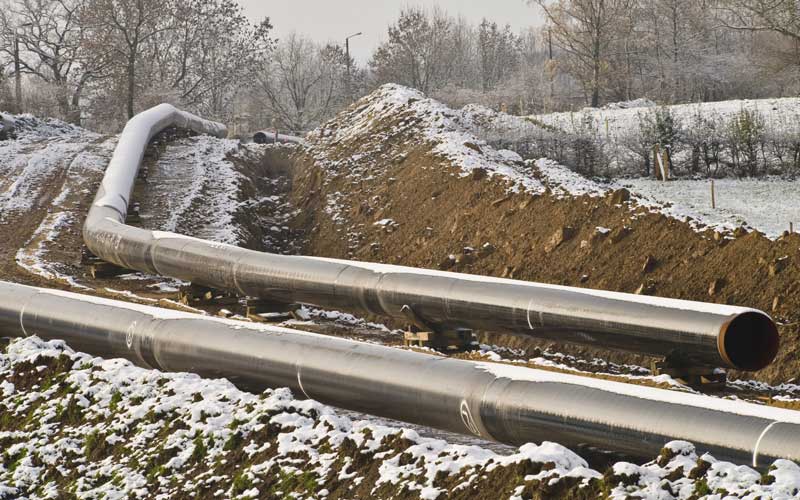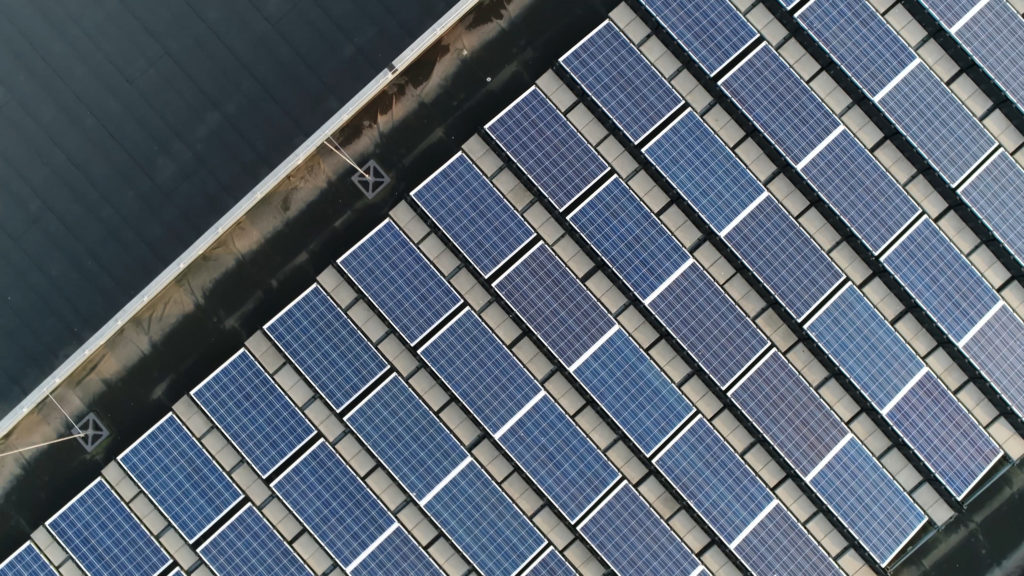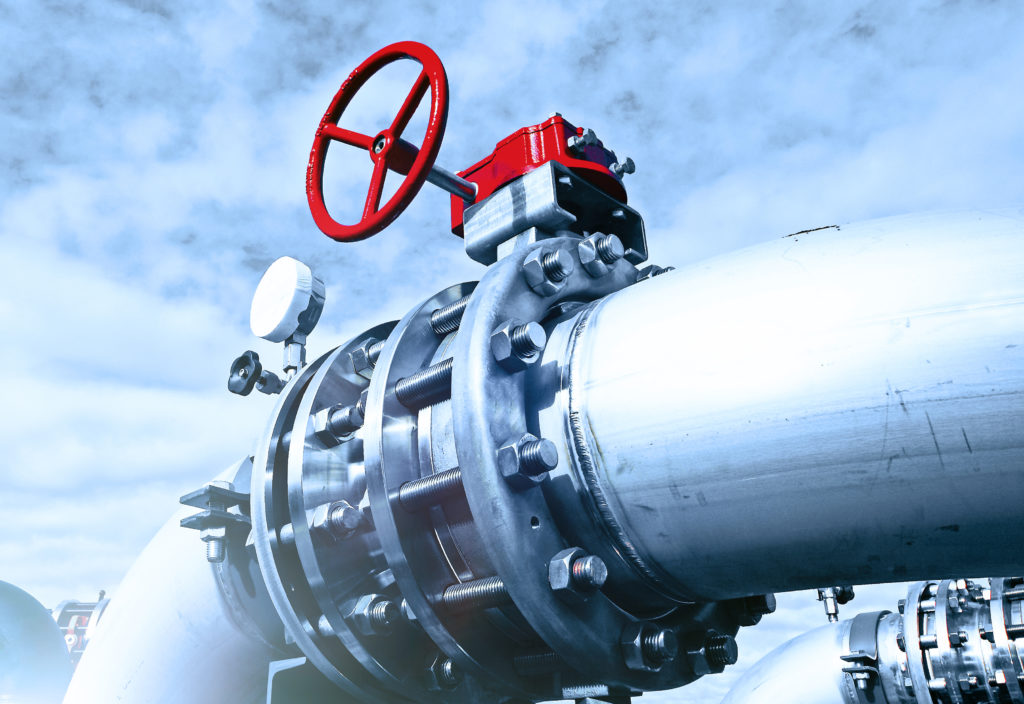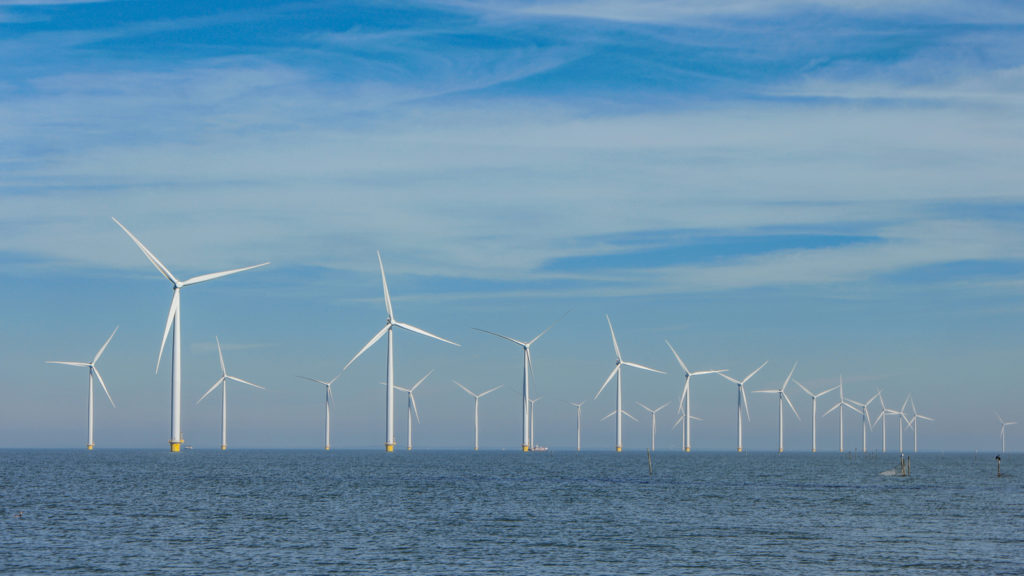Every November, as the days get shorter and the air chillier, Greg Cunningham braces himself for what’s to come. But it’s not the raw Maine winter he’s preparing for; it’s the annual outcry from utility companies and the gas industry calling for more pipelines and power plants in New England.
As head of CLF’s Clean Energy and Climate Change program, Cunningham knows better than anyone what the stakes are if politicians, regulators, and residents buy into – literally – Big Gas’s fear-mongering propaganda. Because those stakes are nothing less than the indiscriminate disruption of New England’s economy, environment, and health if climate-damaging emissions from fossil fuels like gas remain unchecked.
“Every winter we hear the same message: we need more gas or there could be rolling blackouts,” he says. “That’s just not true. What we need is to finally break free of this polluting fuel and invest wholesale in growing our supply of clean energy.”
What is true is that New England has become increasingly dependent on gas for both heating and electricity over the last two decades. But the myth that gas shortages are looming was debunked long ago.
Separate reports released in recent years by CLF and the Massachusetts Attorney General’s office show that the region has more than enough fuel to make it through even the coldest winter without saddling residents with the billion-dollar costs of new gas plants and pipelines. And with every New England state requiring that more and more of its power come from clean sources, the region will soon need less gas, not more.
Ending the region’s dependence on gas is even more urgent following the findings of the Fourth National Climate Assessment, which outlined the grim climate effects already being felt in New England and across the country as a result of climate change. Another headline-grabbing report from the International Panel on Climate Change gave its own stark warning: the world has barely 10 years to slash emissions from dirty fossil fuels to prevent catastrophic climate impacts globally.
Why, then, do news reports still tout the dangers of gas shortages every winter? Because Big Gas and its allies know that fear sells. Scaring New Englanders into paying for a new pipeline is an easy way to boost their bottom lines for their private investors. It doesn’t matter that the region’s families and businesses would be paying for something they don’t need – or that it would deepen the region’s reliance on a potent climate-damaging fuel.
So, when temperatures dip below freezing, utility and gas spokespeople make the rounds of newsrooms and television studios to keep their false narrative alive. The surprise is who has stepped up alongside Big Gas to stoke that fear: New England’s regional grid operator. Electricity in any given New England state is generated locally, but managed regionally, by a nonprofit entity called ISO-New England (short for Independent System Operator-New England), based in Springfield, Massachusetts.

It’s easy enough to dismiss Big Gas’s annual hyperbole as the industry simply hyping its product for profit. But ISO-New England and its longtime president, Gordon van Welie, hold more credibility with the politicians and regulators who would approve a new pipeline or gas plant. One might assume that the entity overseeing the region’s electricity mix would be an ally in ending New England’s dependence on dirty fuels. However, that hasn’t been the case so far.
The problem, says Cunningham, is ISO-New England’s perception of its mission. “The ISO sees itself as having three jobs: to keep the lights on, keep electricity prices low, and plan the future of the region’s electric system,” he says. It does not consider mitigation of climate damage to fit within those narrowly perceived roles. But that interpretation misses a critical part the grid operator could play to help advance the existing policies of several exisiting state policies – which represent more than three-quarters of electricity consumption in New England – that demand a clean energy supply.
That’s not to say ISO-New England is anti–clean energy. It already recognizes the transformational role of clean energy in the region’s economy, tracking a decade-long-plus downward trend in demand for electricity thanks to energy efficiency programs and the rapid growth of solar power. The grid operator predicts those trends will continue over at least the next 10 years, even as our lives become more electrified due to smart home technology and electric cars, among other advancements

But with van Welie at the helm, ISO-New England has also consistently pushed back against states’ demands for more clean energy. State policies – and the climate crisis – require clean, renewable power. But the ISO is limiting their ability to get it by maintaining an outdated market system that promotes fossil fuels like gas over renewables.
The proposed Killingly gas power plant in Connecticut is an example of this in action. Despite New England already having 30% more power than it needs – per the ISO’s own estimates – the plant secured a seven-year commitment from the grid operator to provide the region power starting in 2022. State regulators leaned heavily on that commitment in their decision to grant the fossil fuel plant a permit. All of this comes at a time when the region wants, and needs, more clean power rather than dirty gas.
“What is most distressing about Killingly is that this polluting plant was granted a commitment in a year when ISO made changes it claimed would spur more renewables,” says Cunningham. “The ISO also had more than enough excess power already. Nonetheless, its outdated way of doing business churned out yet another climate killer.”
Just as alarming was a report released by ISO-New England that could almost be read as a paid endorsement for the gas industry. In the report, the ISO is claiming that the grid will grow increasingly unreliable without a flood of more fracked gas into the region.
Working with the regional grid operator is a key component of CLF’s advocacy work. So refuting that report was critical to keeping the organization’s clean energy push on track. Cunningham’s team worked with CLF allies to counter the report’s conclusions, pointing out the many flaws in its analysis. “The assumptions on which the ISO based its claims were fundamentally wrong,” says Cunningham.
The report underestimated the region’s significant gains in renewable energy made to date and overestimated the growth of gas for both heating and electricity. It also ignored credible predictions – including ISO-New England’s own – about how much more clean energy will come online in the next decade as a result of existing state laws.
At CLF’s request, ISO-New England reran its analysis based on correct assumptions. As CLF and its allies expected, that subsequent analysis contradicted the original report, showing there would be no fuel shortages in the region if current trends in clean energy production stay on track.

The grid operator, however, has not only failed to retract its initial flawed conclusions, but continues to promote them to regulators at the federal and state levels as well as local lawmakers. In ISO-New England’s view, says Cunningham, standing by its initial claims is simply being conservative in its outlook. But, he continues, “they re-opened the door to a pipeline solution we don’t need and that comes at great cost to people and our environment.”
The report is also responsible for ISO-New England’s ongoing fixation with fuel reliability and gas, which distracts from a focus on the clean energy solutions state laws demand. The proof of ISO-New England’s wrongheadedness is not just in theoretical analyses. The grid operator’s own actions also tell a different story than its report. Two winters ago, two bomb cyclones struck New England within weeks of each other, and temperatures fluctuated wildly from January to March. Yet the grid was secure as a result of required advance planning ISO-New England.
“The ISO always has a surplus of power generation available – over 30% more than it needs during times of highest winter demand,” says Cunningham. “So even during a long cold snap, our system has options.”
What’s more, New England states are moving aggressively to put even more clean energy on the grid. In 2016, CLF helped pass a comprehensive energy bill in Massachusetts that authorizes the purchase of more than 3,600 megawatts of clean energy over the next decade. As a result of that bill, the Commonwealth signed large contracts for Canadian hydropower and offshore wind earlier this year. In 2019, bids for leases of three offshore wind sites in the region were so lucrative that they broke prior records.
Additionally, Rhode Island has pledged to reach 1,000 megawatts of clean energy by the end of 2020. And both Connecticut and Maine have increased their renewable energy targets – pledging that 40% and 80% of their electricity will come from clean resources by 2030, respectively.

Beyond the drive to grow clean energy production within their borders, New England states have also pledged – and in some cases mandated – sharp drops in climate-damaging emissions by 2050. Massachusetts, Connecticut, and Maine all have laws on the books that mandate these emissions cuts. All of this necessitates a shift in ISO-NE’s gas-heavy perspective on power generation to one that accommodates the states plans to draw down emissions by relying on clean energy.
With clean energy growing at such a fast pace in the region and climate scientists warning of such dire consequences without urgent action, there’s no more time to waste arguing about new gas pipelines and power plants, says Cunningham. “ISO-New England can either be a help or a hindrance,” he continues. It can choose to catch up with state efforts to cut fossil fuel use and transition to renewable energy sources. Or it can stick with Big Gas’s old, outdated playbook that claims fracked gas is the only answer to winter cold snaps. If it chooses the latter, it may be at its own peril.
Cunningham and his team aren’t waiting for ISO-New England to choose, however. They continue to work with allies to design market reforms the grid operator could implement to lessen the region’s dependence on gas and boost clean resources. If the grid operator fails to keep pace with the region’s energy transition on its own, however, then strong state policies that push gas out and pull clean energy in will force the matter. In states that have not yet passed laws mandating cuts in carbon emissions, CLF is working with allies and lawmakers to pass them. Where those laws already exist, the organization is bolstering them with concrete and aggressive action plans.
With the arrival of winter, the gas industry’s paid fearmongers make their annual appearance in the region’s media outlets. Their chorus – and ISO-New England’s – is familiar and predictable. It’s also exaggerated and overstated. “The bottom line is that our electricity supply is secure and will only become more so as we wean ourselves off of fossil fuels,” says Cunningham. “What’s at stake here is not the false threat of rolling blackouts, but the urgent threat to our climate future. It’s time to turn down the gas for good.”
A version of this story originally appeared in the Winter 2019 issue of Conservation Matters.

